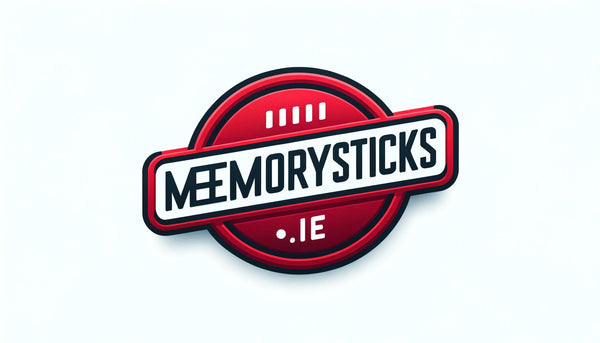Introduction
USB flash drives have become an indispensable tool for storing and transferring data. Whether you're a student, a professional, or just someone who likes to keep their files handy, a reliable USB flash drive is a must-have. But with so many options available, how do you choose the right one? This article will guide you through everything you need to know to make an informed decision.
The importance of choosing the right memory stick cannot be overstated. A good flash drive not only ensures the safety of your data but also enhances your productivity by providing quick and easy access to your files. Therefore, it's crucial to understand the various aspects that make a USB flash drive suitable for your needs.
Understanding USB Flash Drives
Definition and Basic Functions
A USB flash drive, also known as a memory stick or pen drive, is a small, portable storage device that uses flash memory to store data. It connects to computers and other devices via a USB port, allowing for the easy transfer and backup of files. Flash drives are widely used because of their convenience, durability, and capacity to hold large amounts of data in a compact form.
The basic function of a USB flash drive is to store data securely and make it accessible whenever needed. They are commonly used for backing up important files, transferring data between devices, and carrying documents, photos, videos, and music on the go. Their plug-and-play nature makes them incredibly user-friendly, as they require no special software or drivers to operate.
Evolution and Types of USB Flash Drives
USB flash drives have come a long way since their inception in the early 2000s. Initially, they had limited storage capacities and slower transfer speeds. However, technological advancements have led to the development of flash drives with capacities ranging from a few megabytes to several terabytes and faster USB 3.0 and USB-C connections.
There are various types of USB flash drives available, each designed for specific needs. Some are built for rugged environments, with waterproof and shockproof features. Others focus on security, offering encryption and password protection. There are also novelty designs, dual connectivity drives (USB-A and USB-C), and those with integrated software for added functionality.
Key Factors to Consider When Choosing a USB Flash Drive
Storage Capacity: Matching Your Needs
One of the first things to consider when choosing a USB stick is its storage capacity. This depends on the amount and type of data you plan to store. For simple documents and small files, a lower capacity drive (8GB or 16GB) may suffice. However, for larger files such as videos and high-resolution images, you'll need a drive with higher capacity (64GB, 128GB, or more).
It's important to note that the actual usable storage space may be slightly less than advertised due to the formatting and file system used by the drive. Therefore, it's advisable to get a slightly larger capacity than you think you'll need to ensure you have enough space for your data.
Transfer Speed: USB 2.0 vs USB 3.0 vs USB-C
Transfer speed is another crucial factor to consider. USB pen drives come in different versions, primarily USB 2.0, USB 3.0, and USB-C, each offering different transfer speeds. USB 2.0 drives are the slowest, with transfer speeds up to 480 Mbps. USB 3.0 drives are much faster, with speeds up to 5 Gbps, making them ideal for transferring large files. USB-C drives are the latest generation, offering even faster speeds and a reversible connector for added convenience.
When choosing a flash drive, consider how often you'll be transferring data and the size of the files. If you frequently move large files, investing in a USB 3.0 or USB-C drive will save you time and frustration.
Durability and Build Quality: Ensuring Longevity
The durability and build quality of a USB flash drive are important, especially if you plan to carry it around frequently. Look for drives with sturdy construction and materials that can withstand daily wear and tear. Some drives come with additional protective features like waterproofing, shock resistance, and dustproofing, which can be beneficial for outdoor use or in harsh environments.
Metal casings are generally more durable than plastic ones, providing better protection against physical damage. However, they may also be more expensive. Consider your usage and environment when deciding on the build quality and durability features you need.
Compatibility: Ensuring Your Device Supports the USB Flash Drive
Before purchasing a memory stick, ensure that it is compatible with your devices. Most modern computers and laptops support USB 2.0 and USB 3.0 drives, but older models may not. If you have a newer device with a USB-C port, you'll need a USB-C flash drive or an adapter to use a standard USB-A drive.
Additionally, consider the file system used by the flash drive. Some are formatted for Windows (NTFS or FAT32) while others are formatted for Mac (HFS+). Many drives are now formatted with exFAT, which is compatible with both Windows and Mac. Make sure the drive you choose is compatible with your operating system, or be prepared to reformat it if necessary.
Security Features: Encryption and Password Protection
For those concerned about data security, look for USB flash drives with encryption and password protection features. Encryption ensures that your data is unreadable to unauthorized users, while password protection requires a password to access the drive's contents. These features are especially important if you store sensitive or confidential information on your flash drive.
Hardware encryption is generally more secure than software encryption, as it is harder to bypass. Some drives also offer biometric security, such as fingerprint recognition, for added protection. Consider the level of security you need based on the type of data you'll be storing on the drive.
Special Features to Look Out For
Novelty Designs: Customised and Unique USB Sticks
For those looking for a bit of personality in their tech, novelty memory sticks come in various shapes, sizes, and designs. From drives shaped like your favorite characters to those that double as keychains or pens, there's no shortage of unique options. While these designs can be fun and eye-catching, make sure they don't compromise the drive's functionality or durability.
Dual Connectivity: USB-A and USB-C Flash Drives
With the increasing prevalence of USB-C ports in newer devices, dual connectivity flash drives that feature both USB-A and USB-C connectors are becoming more popular. These drives offer the convenience of being compatible with a wide range of devices, from older laptops to the latest smartphones and tablets. They eliminate the need for carrying multiple drives or adapters, making them a practical choice for those with diverse tech ecosystems.
Integrated Software: Pre-loaded Utilities and Tools
Some USB flash drives come with integrated software that can enhance their functionality. This can include backup and recovery tools, file synchronization software, or security applications like antivirus or encryption programs. While not essential, these added features can provide additional value and convenience, especially for users who frequently use their drives for specific tasks.
Popular Brands and Models
Overview of Leading Brands
When it comes to USB flash drives, there are several well-known brands that consistently deliver quality products. SanDisk, Kingston, and Samsung are among the top names in the industry, known for their reliable and high-performance drives. These brands offer a wide range of options, from basic models for everyday use to high-end drives with advanced features for professionals.
Comparison of Popular Models and Their Unique Selling Points
Each brand has its flagship models that stand out in the market. For example, the SanDisk Extreme Pro is renowned for its fast transfer speeds and rugged construction, making it ideal for photographers and videographers who need to quickly transfer large files. Kingston's DataTraveler series is known for its affordability and durability, offering good value for those on a budget. Samsung's T7 Portable SSD, while not a traditional flash drive, offers incredibly fast speeds and large capacities for those who need top-of-the-line performance.
When choosing a flash drive, compare the features and prices of different models to find the one that best fits your needs. Consider factors like speed, capacity, durability, and any additional features that may be important to you.
Tips for Maintaining Your USB Flash Drive
Proper Usage and Handling
To ensure the longevity of your USB flash drive, it's important to handle it properly. Avoid exposing it to extreme temperatures, moisture, or direct sunlight. When not in use, store it in a safe place where it won't get crushed or damaged. Be careful not to bend or apply excessive force to the drive, especially when it's plugged into a port.
Data Backup and Recovery Strategies
Even the most reliable USB sticks can fail, so it's crucial to have a backup strategy in place. Regularly back up the data on your flash drive to another storage device or cloud service. This way, if your drive gets lost, damaged, or corrupted, you won't lose your important files. Additionally, consider using data recovery software that can help retrieve files from a damaged or malfunctioning drive.
Making an Informed Decision
Summary of Key Points to Remember
When choosing a USB flash drive, consider the following key points:
- Storage capacity: Match the drive's capacity to your data storage needs.
- Transfer speed: Opt for USB 3.0 or USB-C for faster data transfer.
- Durability and build quality: Look for a sturdy drive that can withstand daily use.
- Compatibility: Ensure the drive is compatible with your devices and operating system.
- Security features: Consider encryption and password protection for sensitive data.
Recommendations Based on Different User Needs
The ideal USB flash drive varies depending on the user's needs. For students, a basic, affordable drive with sufficient capacity for documents and assignments may be sufficient. Professionals, especially those in fields like photography or video production, may require a high-capacity, high-speed drive with robust security features. For casual users, a mid-range drive with a balance of capacity, speed, and durability should suffice.
Exploring Alternatives
Brief Comparison with Other Portable Storage Options
While USB flash drives are convenient and portable, there are other storage options to consider. External hard drives offer larger capacities and are suitable for backing up large amounts of data. However, they are bulkier and require external power or a USB connection for operation. Cloud storage is another alternative, providing remote access to files from any device with an internet connection. It's ideal for collaboration and sharing, but it relies on a stable internet connection and may have ongoing subscription costs.
Your Next Steps
Encouraging Readers to Assess Their Needs and Make a Choice
Now that you're armed with the knowledge of what to look for in a USB flash drive, it's time to assess your needs and make a choice. Consider the types of files you'll be storing, how often you'll be transferring data, and any specific features you might need. Don't be swayed by fancy designs or gimmicks; focus on the core features that will serve your needs best.
Suggesting Further Reading or Resources for More Information
For those looking to delve deeper into the world of USB flash drives, there are numerous resources available online. Tech review sites often provide detailed comparisons and reviews of the latest models. Manufacturer websites can offer insights into specific features and technologies used in their drives. Online forums and communities are also great places to seek advice and recommendations from other users.
Conclusion
Choosing the right USB flash drive is essential for ensuring that your data is stored safely and can be accessed easily. By considering factors such as storage capacity, transfer speed, durability, compatibility, and security features, you can find a drive that meets your needs and enhances your digital life. Remember to handle your flash drive with care and back up your data regularly to protect against loss or damage. With the right USB flash drive in hand, you can enjoy the convenience and reliability of portable storage for years to come.

